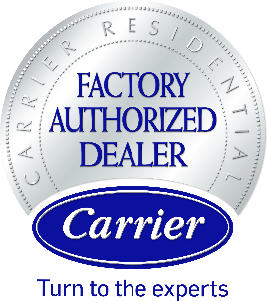Carbon monoxide is an odorless, colorless, and tasteless gas that occurs when there is a lack of oxygen or disruption in the burning process of fuels like wood or natural gas. Carbon monoxide can come from household appliances like your furnace, especially if it has been installed improperly or is not in proper working order. Carbon monoxide can hurt your health, so you must work to protect your home and prevent carbon monoxide leaks.
Protect Your Home from Dangers of Carbon Monoxide
Carbon monoxide is an invisible threat to the health and safety of your family. It is important to take any preventative measures you can to protect your home from a carbon monoxide leak.
How to Detect Carbon Monoxide in Your Home
The best way to detect carbon monoxide in your home is by using a carbon monoxide detector. This device is similar to a smoke alarm as it monitors the air for carbon monoxide and sounds an alarm if high or hazardous levels are detected in your home. It is best to place a detector near each living area in your home.
Even if the alarms don’t go off, you could still be exposed to low levels of carbon monoxide that can cause health issues. If you or anyone in your home is experiencing symptoms such as headaches, fatigue, nausea, or chest pain, don’t wait to take action. Call your HVAC company right away to inspect your heating system.
HVAC Safety Tips for Carbon Monoxide
Carbon monoxide poisoning poses serious health risks, and one of the best ways to avoid this from happening in your home is by taking the right preventative measures. An HVAC company can help you prevent carbon monoxide leaks from happening in your home. Use the following tips to help protect you and your family:
- Schedule regular heating system maintenance. You should have your heating system inspected and address any issues at least once per year before the start of the winter season. The HVAC technician will look at your furnace, vents, chimneys, fireplaces, and any appliances that burn fuel to identify any issues that may put you at risk for carbon monoxide leaks.
- Inspect the heat exchanger. The typical furnace maintenance visit from your HVAC company may not include a heat exchanger inspection. The heat exchanger is one of the most common causes of carbon monoxide leaks, so it is important to make sure that this part is not leaking or failing.
- Make sure your vents and flues are clean. Your ventilation system is meant to help move hazardous gases outside of your home, so it is important to make sure your vents are not blocked or clogged. Blocked chimney flues are another common cause of carbon monoxide leaks, so it is important to make sure that these are also cleaned and clear of debris.
One of the best ways to prevent carbon monoxide poisoning is by scheduling regular preventative maintenance with an experienced HVAC technician. If you need a tune-up or inspection of your heating system, call us today.



